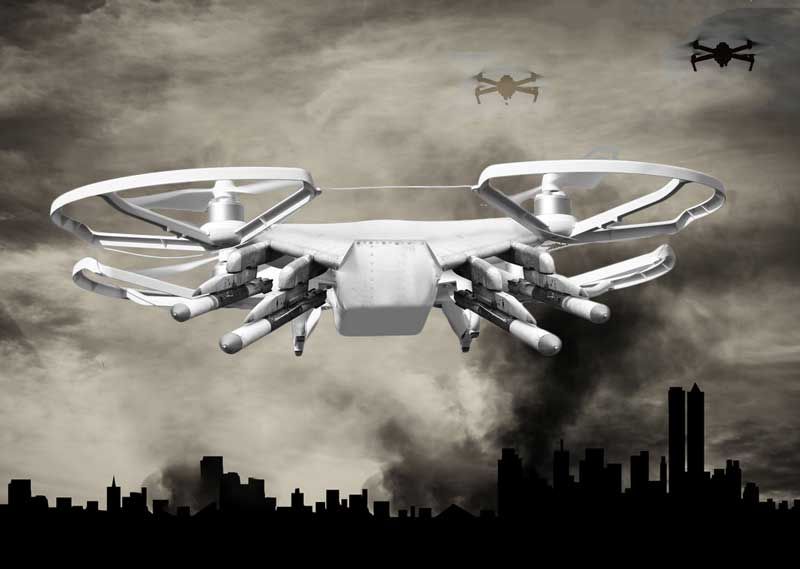Notes from the drone arms race
By Elisabeth Eaves | September 26, 2017

Enemy drones rigged with bombs or explosives have become more than a nuisance to US-backed forces in recent years. Political scientists Itai Barsade and Michael C. Horowitz compare the role of ISIS drones today—often souped-up versions of off-the-shelf models—to that of improvised explosive devices, a cheap, adaptable technology that fundamentally shaped battlefields in the 2000s. Earlier this year, the head of the US Special Operations Command described a day on which an anti-ISIS campaign “nearly came to a screeching halt” as it faced 70 drones in the air. New York Times national security reporter Eric Schmitt calls ISIS drones “one of the Pentagon’s most vexing counterterrorism conundrums.”
Now, Schmitt reports on a $700 million Pentagon program to figure out what to do about the airborne menace. The program staged a “counter-drone bake-off,” in which it invited major defense contractors and smaller tech companies to compete. Each contestant’s goal: “To destroy or disable 30 drones flying more than 250 yards away.” Four of the competing systems used laser weapons; one carried a giant net, to capture hostile drones like so many mechanical butterflies.
Result? “Threat targets were very resilient against damage,” the Pentagon told Schmitt. “Most technologies still immature.” In other words, deep pockets and conventional air superiority notwithstanding, the Pentagon does not appear to have a solution.
The US military is focused on war zones like those in Syria, Iraq, and Yemen. But of course, if militants can adapt a commercial drone in Syria, anyone can do so anywhere. Police forces in at least a few countries have been looking at ways to counter potentially hostile drones: In the Netherlands, they’ve trained eagles to attack them as prey. With the tools to make an attack drone—from cameras, software, and explosives to the remotely-piloted aircraft themselves—widely available, this is not a problem that can likely be solved by controlling trade in component parts. Which means the race for a military solution will continue.
Publication Name: The New York Times
To read what we're reading, click here
Together, we make the world safer.
The Bulletin elevates expert voices above the noise. But as an independent nonprofit organization, our operations depend on the support of readers like you. Help us continue to deliver quality journalism that holds leaders accountable. Your support of our work at any level is important. In return, we promise our coverage will be understandable, influential, vigilant, solution-oriented, and fair-minded. Together we can make a difference.















